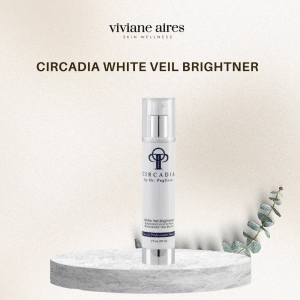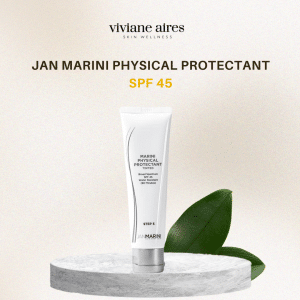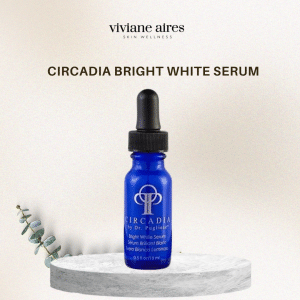
Understanding Hyperpigmentation: Causes, Symptoms, and Treatments
Summertime fun often leaves behind unwanted souvenirs: pigmentation, discoloration, and the aftermath of sun damage. While these concerns can affect anyone, individuals with skin of color often face unique challenges in addressing these issues.
Fortunately, with the right care, you can restore your skin to its radiant, even-toned self and you are lucky if you are based in Philadelphia. Viviane Aires Skin Wellness knows exactly how to treat hyperpigmentation and give you the glowing skin that you have always dreamt of.
What is Pigmentation?
To understand how to tackle hyperpigmentation, you need to understand what pigmentation really is. Pigmentation refers to the coloring of the skin, which occurs when melanin, the pigment responsible for your skin’s color, is overproduced in certain areas. During summer, increased sun exposure can lead to a surge in melanin production, resulting in dark spots, sun damage, and uneven skin tone.
Hyperpigmentation, a common concern after summer, occurs when patches of skin become darker than the surrounding areas. This can be exacerbated by factors like unprotected sun exposure, hormonal changes, or even post-inflammatory responses to acne or injuries.
What causes hyperpigmentation in skin?
Sun Exposure
One of the most significant causes of hyperpigmentation is prolonged exposure to the sun. UV rays stimulate melanocytes, the cells responsible for melanin production, leading to sun spots, also known as age spots or liver spots. Over time, even moderate sun exposure can cause these dark patches to appear, especially on areas like the face, hands, and shoulders. Whether male or female, we’re all experiencing more photo damage due to the depletion of ozone layer.
Hormonal Changes
Hormonal fluctuations, particularly in women, can lead to a type of hyperpigmentation known as melasma. This condition is often triggered by pregnancy, birth control pills, or hormone replacement therapy. Melasma typically presents as dark, irregular patches on the face, especially on the cheeks, forehead, and upper lip. Let’s not forget Menopause
“During menopause, some women experience more pigmentation on their face, called melasma, which is modeled pigmentation on the cheeks, upper lip and forehead,” says Aires “ This is caused by a combination of hormonal changes and sun exposure.
Medications
Certain medications can cause hyperpigmentation as a side effect. Drugs like chemotherapy agents, antibiotics, and some anti-seizure medications can lead to increased melanin production, resulting in dark patches on the skin.
Genetics
Genetics can play a role in the likelihood of developing hyperpigmentation. Individuals with darker skin tones naturally have more active melanocytes, making them more prone to conditions like melasma and PIH.
Aging
As we age, the distribution and activity of melanocytes can become irregular, leading to the appearance of age spots. This natural aging process, combined with cumulative sun exposure, makes hyperpigmentation more common in older adults.
Assess the Damage by Identify Your Skin’s Needs:
The first step in addressing pigmentation concerns is to assess the extent of the damage. Are you dealing with mild discoloration, or have you noticed more persistent dark spots? Understanding your skin’s current state will help you tailor a treatment plan that targets your specific concerns.
Begin with Gentle Exfoliation:
Exfoliation is key to removing the layer of dead skin cells that can make pigmentation more apparent. Opt for a gentle exfoliator that suits your skin type. Look for products with alpha hydroxy acids (AHAs) like glycolic or lactic acid, which can help brighten the skin and fade dark spots over time. However, it’s crucial to avoid over-exfoliating, as this can irritate the skin and worsen pigmentation.
Incorporate Brightening Ingredients
To effectively reduce pigmentation, incorporate brightening ingredients into your skincare routine. Vitamin C is a powerhouse antioxidant known for its ability to lighten dark spots and even out skin tone. Niacinamide, another potent ingredient, can reduce the appearance of hyperpigmentation and improve the skin’s barrier function.
Other ingredients to consider include:
- Licorice Extract: Helps to inhibit melanin production and lighten dark spots.
- Arbutin: A natural skin brightener that targets hyperpigmentation.
- Kojic Acid: Derived from mushrooms, it effectively reduces dark spots and evening skin tone. Use Circadia White Veil Brightner which will help you brighten and lighten your skin as it has niacinamide extracts.

Use Sunscreen as your Skin Shield:
For those with hyper-pigmented skin, sunscreen is vital for long-term healing. During the summer, the sun’s UV rays are especially strong, so applying sunscreen daily provides an extra layer of defense and helps prevent hyperpigmentation from worsening.
There are two main types of sunscreen: chemical and physical. Before choosing one, it’s important to understand which type and ingredients will suit your skin best. Chemical sunscreens may contain ingredients that could irritate sensitive skin, while physical sunscreens with zinc oxide and titanium dioxide are generally hypoallergenic and less likely to cause reactions.
You can use Jan Marini Physical Protectant Tinted SPF 45 which is recommended by Viviane Aires for its protection against premature skin aging.

Brightening Serums To The Rescue:
Using a skin-brightening serum is an effective way to address hyperpigmentation. These serums are formulated with active ingredients like vitamin C, niacinamide, and alpha arbutin, which help reduce the appearance of dark spots by inhibiting melanin production and promoting a more even skin tone.
Circadia Bright White Serum, recommended by our skin expert Viviane Aires. This magical serum increases the growth of melanin in the skin. Regular application can gradually fade hyperpigmentation, revealing a brighter and more uniform complexion. To maximize results, it’s important to use the serum consistently and pair it with daily sunscreen to protect your skin from further UV-induced pigmentation.

Ingredients to look for in the Products:
When tackling hyperpigmentation, it’s essential to choose products with ingredients known for their skin-brightening and spot-fading properties. Look for vitamin C, a powerful antioxidant that lightens dark spots and boosts overall radiance. Niacinamide is another key ingredient that not only reduces hyperpigmentation but also strengthens the skin barrier.
Alpha arbutin is effective in targeting uneven skin tone by inhibiting melanin production. For gentle exfoliation, consider products with glycolic acid or lactic acid, which help remove dead skin cells and reveal brighter skin. Lastly, licorice extract and kojic acid are natural options that work well to fade dark spots and prevent new ones from forming.
Addressing hyperpigmentation requires a thoughtful approach that combines effective skincare ingredients with daily sun protection. By incorporating skin brightening serums with key ingredients like vitamin C, niacinamide, and alpha arbutin, you can gradually fade dark spots and achieve a more even complexion.
Don’t let hyperpigmentation hold you back. Take the first step towards clearer, brighter skin by scheduling a consultation with Viviane Aires Skin Wellness today. Your journey to flawless skin starts here.